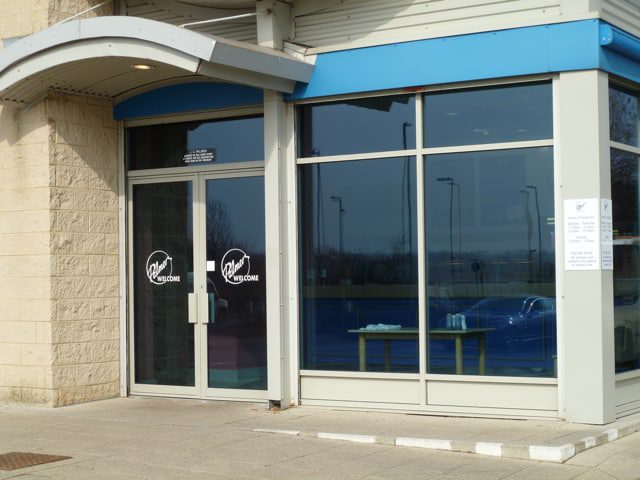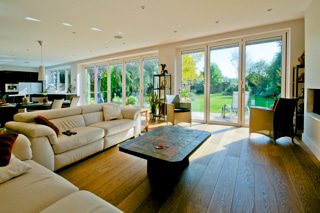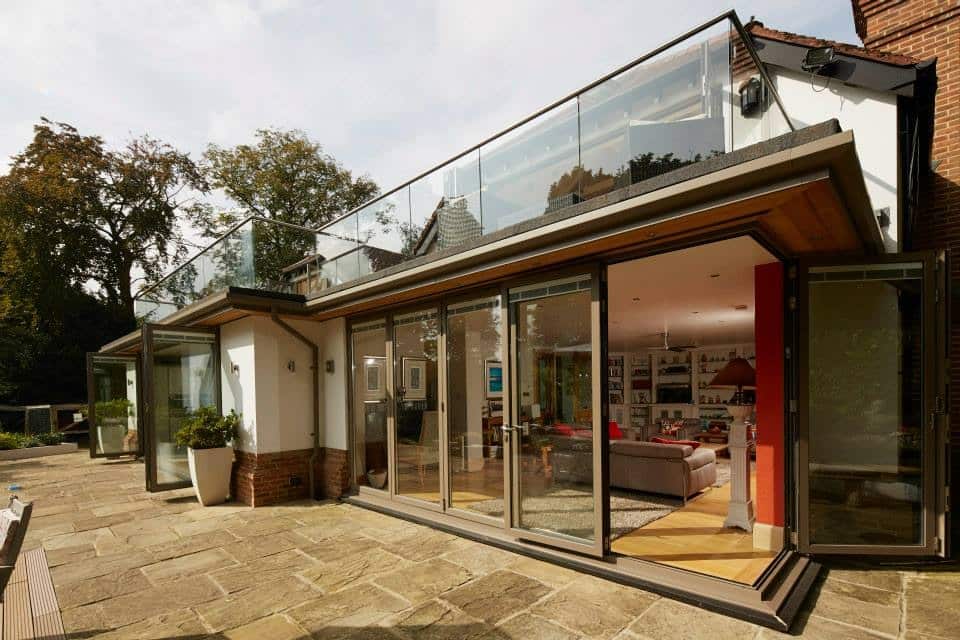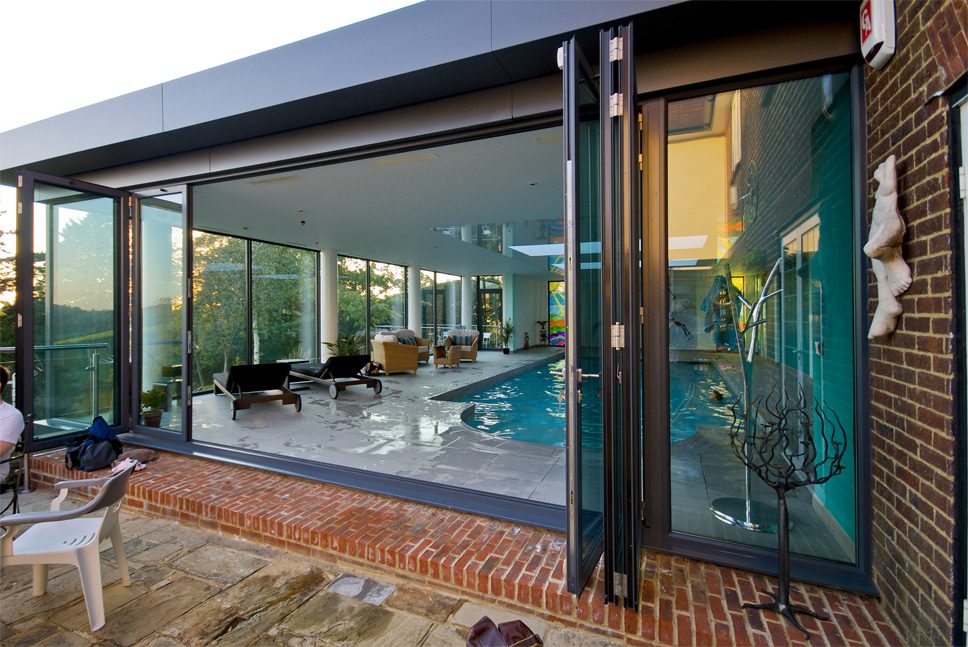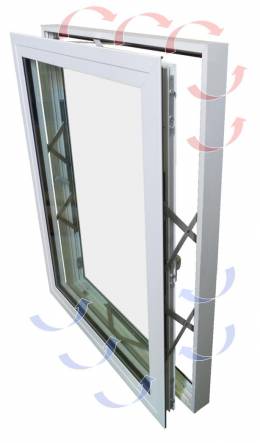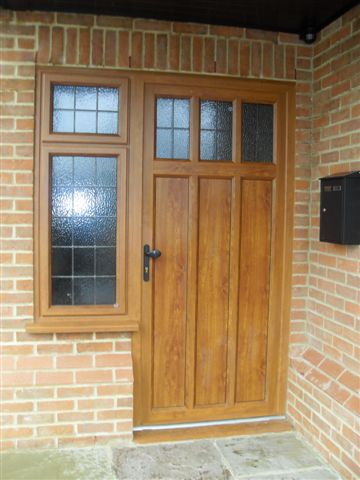If you are in the market for new aluminium windows and in particular for a new build project there are a wide variety of window choices available to you. Added to the variety of window choices are function, material type, window finish, the types of hardware available, trickle vent and glass options and much more.
You will probably already be familiar with typical casement window. In this article we give some information on casement windows and the other types of window styles available to you and how they may benefit your new build or extension. It is true that many homes today will probably only suit the traditional casement opening out windows, but if you are looking for something different, there are choices.
Types of window styles available
![The Casement window is by far the most popular type of window used in typical British homes today.]()
The Casement window is by far the most popular type of window used in typical British homes today. Shown here in the AluK System.
The Casement Window.
The most common window style will be the casement window that is either top hung or side hung. The top hung window has friction stays (or hinges) on the sides of the vent, with either the handle at the bottom of the vent. This type of window will open outwards from the bottom.
The side hung casement has the friction hinges top and bottom with the locking handle on the side. This window will open out from the left or the right depending upon whether it is a left hand hung or a right hand hung.
Where you have two top hung casements side by side, these are separated by the mullion. On top hung windows this is always a fixed part of the window. Where there are two side hung casements side by side, you have the option of either a fixed mullion or a “floating” mullion. A floating mullion is attached to one of the opening vents, so when both vents are opened, you have an uninterrupted open window without a fixed mullion in between.
The floating mullion may often be slightly more expensive than the fixed mullion on side hung windows as a different sort of fabrication is required.
Both top hung and side hung casements can be beside a fixed light if required.
The casement window is one of the popular types of opening windows.
Casement windows are by far the most popular choice of window style as they typify the vast majority of older windows they are replacing. Most old timber and steel windows are the top or side hung open out variety, but mainly side hung.
Top hung windows can be made much larger than their side hung counterparts, therefore if you are looking for the largest possible opening sashes, you will achieve these with a top hung windows.
Horizontal Sliding windows
![Aluminium Windows will be more expensive than their PVCu counterparts but it is worth understanding why.]()
Horizontal Sliding windows provide less aluminium and large glass areas.
Horizontal Sliding windows were more popular in properties built in the 1970’s and 1980’s and have fallen out of favour over recent years. However they can offer certain advantages depending upon the property and should not be dismissed if they are right for you.
The biggest advantage of horizontal sliding windows is that on new build or extensions they can give you the flexibility to have large glass areas as opposed to casement windows that are limited in the maximum sizes of fixed panes and vents. Another advantage of horizontal sliding windows is that they lend an elongated dimension to your home particularly if you are building a wide and short extension.
With some sliding two pane windows available up to three metres in width or more, this means you can have large glass windows and when slid back, a very wide opening. Consider horizontal sliding windows like a reduced patio door and all the benefits of large glass areas they bring.
Sliding windows today are highly security, thermally efficient and come with hard wearing and long lasting rollers and running gear for reliability. They are also well weathered and provide excellent wind and water resistance.
Additionally, sliding windows can be coupled to fixed lights to create bespoke designs.
![The Alumatherm Sash Window from Clearview Group in Market Deeping is the latest generation aluminium vertically sliding windows and supercedes the very successful Mk2 window.]()
The Alumatherm Sash Window from Clearview, Market Deeping is the latest generation of aluminium vertically sliding windows.
Vertical Sliding Windows
Vertically sliding windows, or sash windows as they are referred to, slide up and down and are hung on sash balances that control the opening action of the windows to enable them to stop in the desired position. Sliding windows will normally be used to replace older sash windows and are typical of many homes today fitted with old timber sliding windows.
Some new build houses have been fitted with sliding windows, but the smaller ones can be restrictive in the actual ventilated opening they provide. However for larger windows, these can be manufactured up to 2400mm high or more depending upon the product.
With vertically sliding windows they will have to be an integral part of the property, but that said, they have been used in new build homes as well as to replace traditional windows.
Tilt and Turn Windows
![Tilt and Turn windows are available much larger than casements and can even be made at the size of a door.]()
Tilt and Turn windows are available much larger than casements and can even be made at the size of a door.
The tilt and turn window has also fallen out of favour in recent years owing to its greater cost over casement windows and perceived long term reliability with its hardware. Tilt and turn windows comprise quite complicated gearing and mechanisms compared to standard casement windows. Some window companies avoid them owing to misuse through lack of knowledge of how the window operates and this in turn can result in costly service calls for the window company.
The tilt and turn windows available today comprise much more reliable gearing, but there is still some simple basics required to know how to operate these windows correctly so no damage is caused to the gearing that operates the tilt and the turn function of the window. Your window installer should be able to demonstrate this.
The big advantage of tilt and turn windows is that they can in most cases be used as a window or a door. With tilt and turn windows possible in aluminium at the same sizes as single doors, not only do they create tall windows letting in lots of light, but when in the turn position with the sash opened, they create the same clear opening as a door.
Indeed many European houses use tilt and turn windows in this way and they provide a double use in homes. In the tilt in facility they provide normal ventilation and in the turn position they are as wide open as a single door. This will make tilt and turn window particularly suitable where you may wish to step out onto a roof space, terrace, small juliet balcony or other open space where a door would look out of place.
Tilt and turn windows are a great window option in a modern home and are well worth considering.
Window styles you may not have considered but may suit your home.
There are three other types of windows which are very rarely used in domestic properties but it is worthwhile you being aware of them and where they could possibly be used.
![Rare in the UK, but available from AluK, bottom hung open in windows are suitable for landings and restricted spaces]()
Rare in the UK, but available from AluK, bottom hung open in windows are suitable for landings and restricted spaces
Bottom hung opening in windows.
Not all window systems are designed to accommodate a bottom hung design. Essentially these are windows that are hinged at the bottom with a catch at the top and simply tilt inwards – an inside out top hung casement. Their uses are quite limited in a residential property as they do not give a huge amount of ventilation. However, if you have a very small wc, or a temporary room like a cellar or store room, they may be worth considering.
You may have difficulty in tracking these down, but systems such as AluK and Schuco, do provide them. Another way of looking at a bottom hung opening in window is like a tilt and turn, but without the turn facility.
Pivoting Windows and Top Swing Reversible Windows.
![The new Metal Technology Triple Glazed reversible windows are safe and secure for high level use and have impressive U Values.]()
The new Metal Technology Triple Glazed reversible windows are safe and secure for high level use and have impressive U Values.
Pivoting windows pivot right back on themselves so the outside pane of glass ends up on the inside. They are available as either horizontal or vertically pivoting windows and are generally used in high rise buildings where they can facilitate cleaning of the window from the inside. They may not suit every home, but they can be made much larger than typical top hung or side hung casement windows.
Top swing reversible windows are also mainly used in high rise buildings but they could be worth considering for the home. Essentially these operate in exactly the same way as top hung casement windows but they use a very sophisticated friction stay mechanism.
The window is opened to its normal opening position and then stops as a normal opened window. Upon releasing a catch on the friction stays, the window continues to open out still further and reverses back on itself bringing the outside pane to the inside.
The post What types of opening windows are available? appeared first on Aluminium Trade Supply.
















